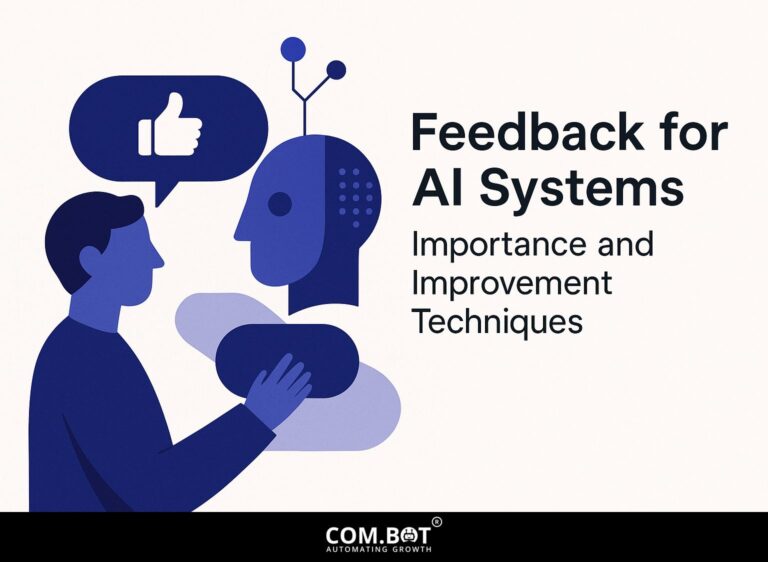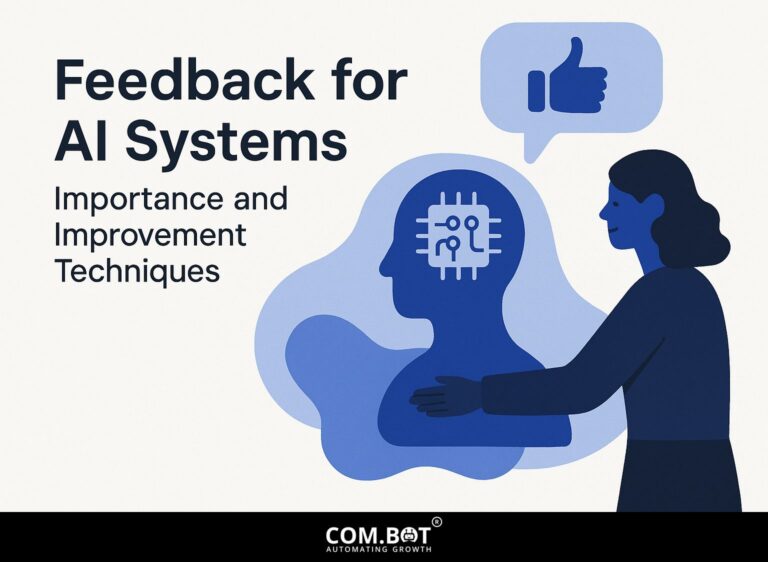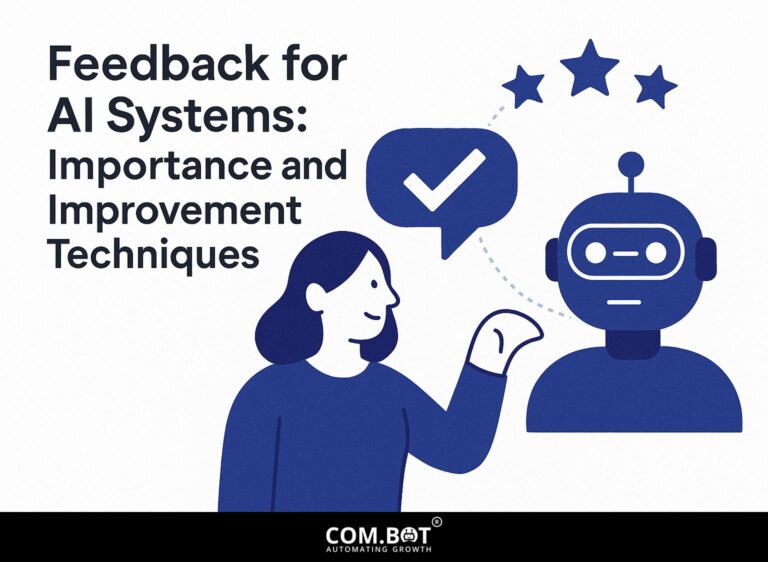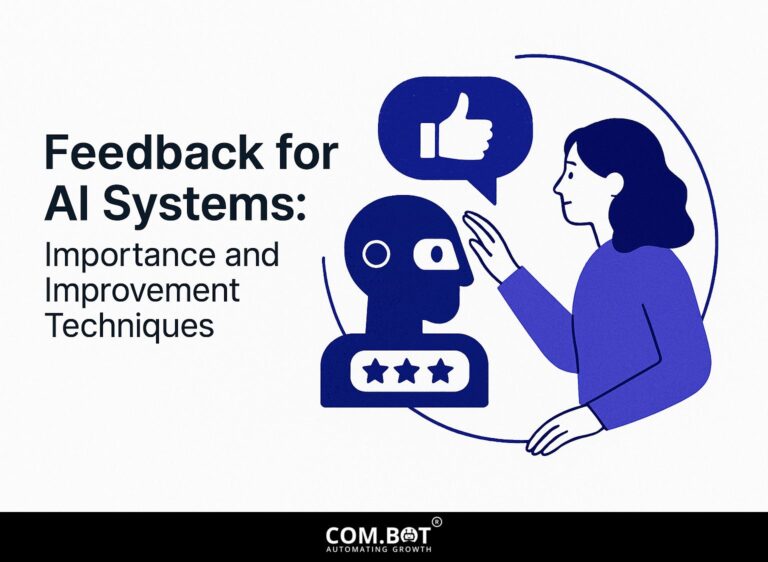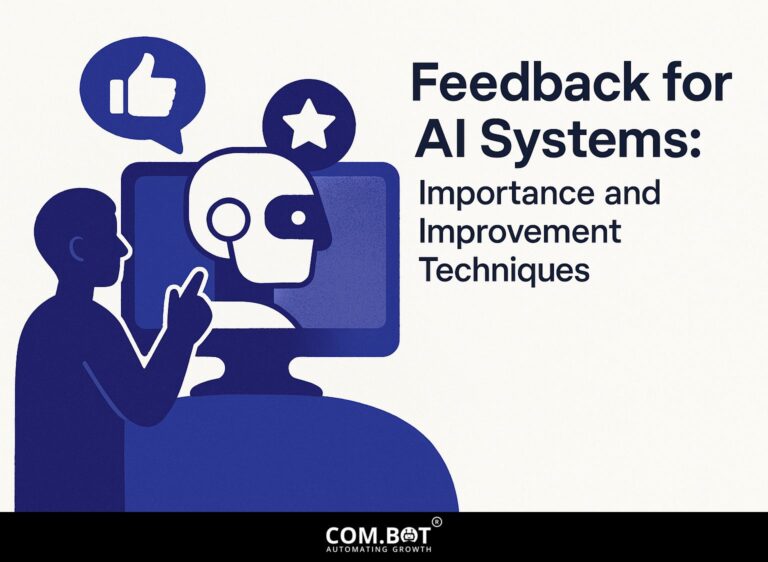Feedback for AI Systems: Importance and Improvement Techniques
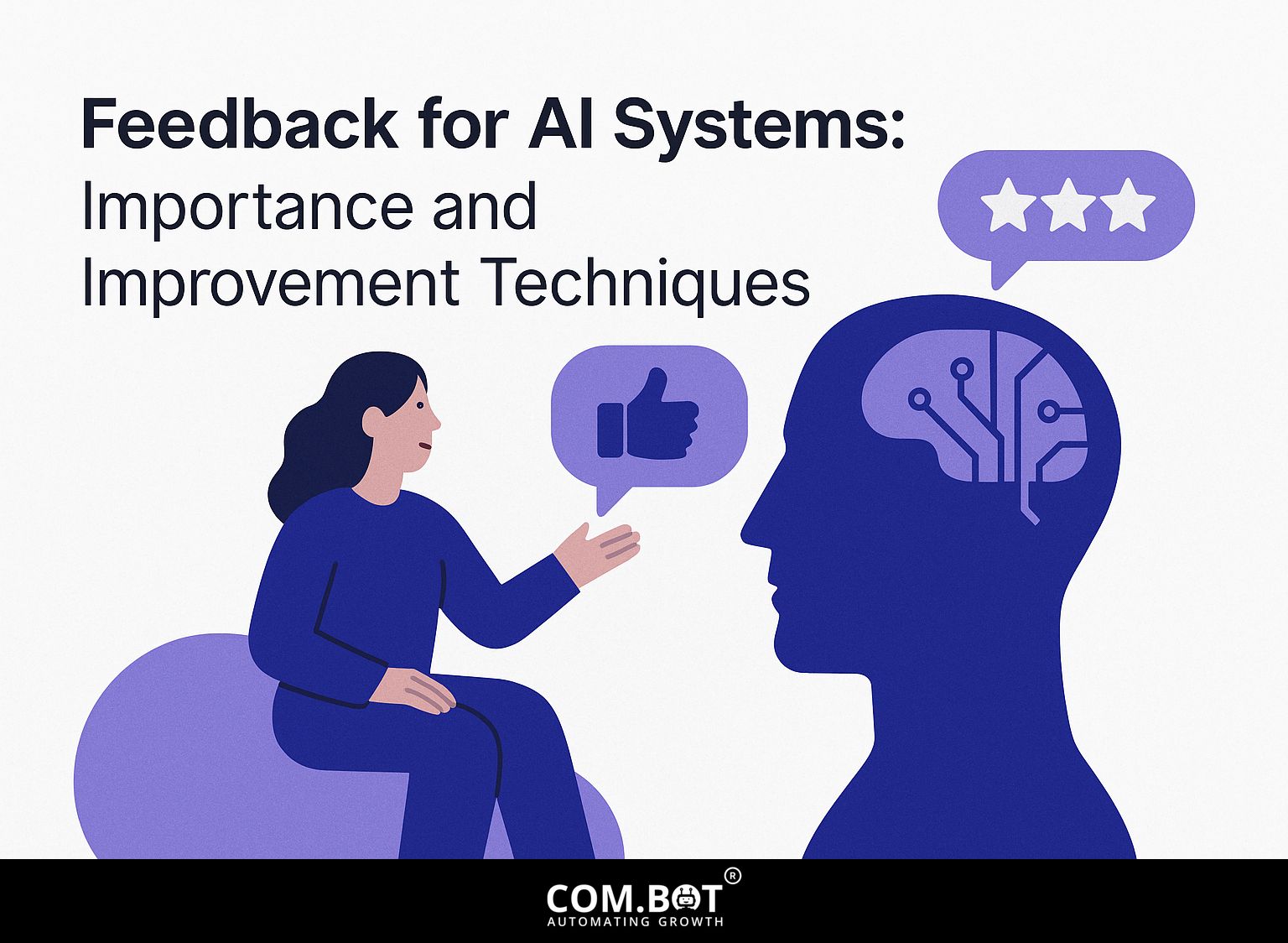
In the fast-changing field of artificial intelligence, human feedback is essential for improving machine learning models. Using human knowledge, especially in reinforcement learning, systems like Label Studio can greatly improve how they work. This article will look at why feedback is important for AI systems and provide practical ways to make them better, making sure your AI solutions work well and meet user needs. Learn how useful feedback can influence AI development!
Key Takeaways:
- 1 The Role of Feedback in AI
- 2 AI in Education Feedback Systems
- 3 Importance of Feedback for AI Systems
- 4 Techniques for Gathering Feedback
- 5 Improvement Techniques for AI Systems
- 6 Challenges in Implementing Feedback
- 7 Upcoming Trends in AI Feedback Systems
- 8 Frequently Asked Questions
- 8.1 What is the importance of feedback for AI systems?
- 8.2 How can feedback be collected for AI systems?
- 8.3 Why is it necessary to include human feedback for AI systems?
- 8.4 What are some techniques for improving feedback for AI systems?
- 8.5 Can feedback be used to improve the ethical implications of AI systems?
- 8.6 How can businesses benefit from gathering feedback for their AI systems?
Definition and Scope
AI feedback is when user actions and the system’s responses help improve AI learning models.
For example, companies such as Amazon use feedback systems by monitoring user actions, like what they buy and their reviews of products, to improve personalization algorithms.
When a user frequently browses hiking gear, the system suggests related items based on similar users’ purchases. Using tools like Mixpanel can make the feedback process easier by examining user actions right away, helping businesses quickly adjust to new preferences.
This method improves user interaction with products and boosts sales, making it an important strategy for growth.
Significance in AI Development
User feedback is essential in AI development, accelerating model improvement and aligning outputs with user expectations.
Research shows that models can improve by up to 30% with effective user feedback mechanisms. For instance, OpenAI employs user interactions to fine-tune its language models, incorporating real-world applications and responses.
A key example is the repeated updates for ChatGPT, where feedback from users has improved the accuracy and relevance of conversations.
To implement a feedback system, consider using tools like:
- Google Forms for surveys
- UserTesting for thorough usability tests
Involving users directly improves the model and builds a sense of community and teamwork.
The Role of Feedback in AI
Feedback is important in AI because it impacts how well models learn and work. This approach aligns with the principles outlined in our analysis of Feedback for AI Systems: Importance and Improvement Techniques, offering deeper insights into the significance of feedback mechanisms.
AI in Education Feedback Systems
AI in Education Feedback Systems
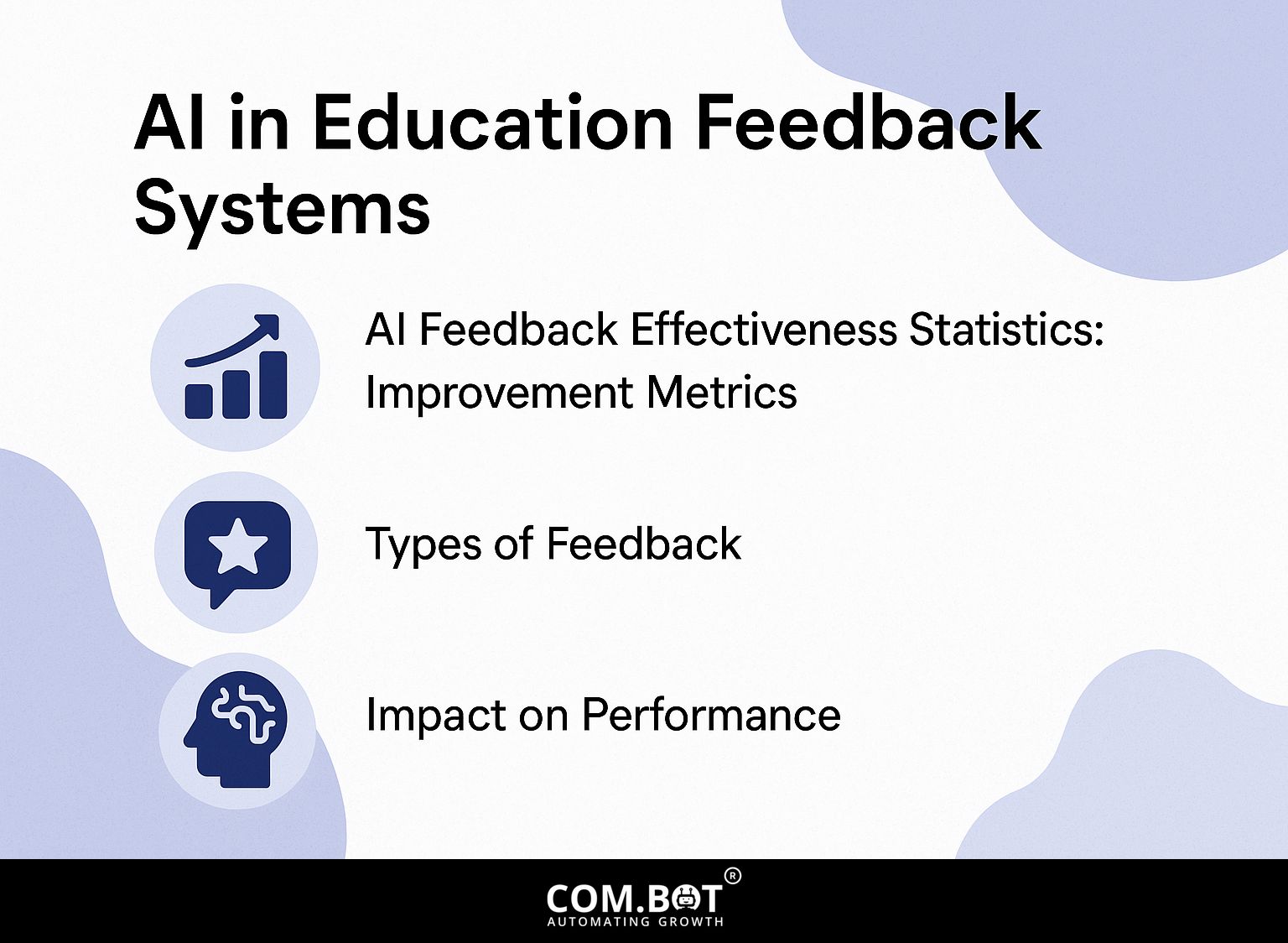
In today’s educational landscape, AI-driven feedback systems are revolutionizing how students and educators interact. These systems not only facilitate personalized learning experiences but also foster an environment of continuous improvement. To understand the importance and techniques for enhancing these systems, you can explore the detailed insights provided in our comprehensive approach (our guide on feedback improvement techniques offers practical strategies).
AI Feedback Effectiveness Statistics: Improvement Metrics
The dataset titled AI in Education Feedback Systems highlights the impact of artificial intelligence on enhancing feedback mechanisms within educational environments. These measurements show how AI tools are improving teaching methods and communication between teachers and students.
AI Feedback Effectiveness Statistics reflect key improvements in educational settings. The data shows a 10% increase in instructors’ use of uptake after receiving AI-generated feedback. This shows that AI tools are effective in giving practical information that teachers find useful, helping them improve their teaching methods and keep students interested.
- Another significant metric is the 5% reduction in mentors’ talk time. AI is improving communication by giving clear feedback. This lets mentors spend more time on personalized interactions instead of long explanations. This shorter talk time might lead to better use of class time, creating a more interactive setting focused on students.
Overall, using AI in education feedback systems is showing promising results by encouraging instructors to adopt best practices and improving communication methods. As AI continues to evolve, its role in educational feedback mechanisms is likely to expand, offering even more sophisticated tools for enhancing learning experiences and pedagogical effectiveness.
Types of Feedback
The feedback in AI can be categorized into explicit feedback (user ratings) and implicit feedback (user behavior analysis), each serving unique roles.
Explicit feedback, such as ratings on platforms like Netflix or user surveys, directly informs AI models of user preferences. For example, a 5-star rating increases how often similar content is seen.
Unlike explicit feedback, implicit feedback comes from user behavior such as clicking on links or the length of time they stay on a product page in online shopping. This helps understand what users like without them having to say it directly.
Reinforcement learning algorithms use both types of feedback. Explicit feedback changes the model by showing clear user approval, and implicit feedback identifies patterns and trends, improving recommendations over time.
Impact on Performance
Implementing feedback mechanisms can increase model performance metrics, leading to a 40% improvement in accuracy in specific applications.
For example, using feedback from users in AI chatbots helps improve how well they understand what users want. Devices such as Amazon’s Alexa and Google Assistant gather data from user interactions to update their algorithms, improving their answers over time.
A/B testing can improve performance by letting developers see which feedback loop works best. In one example, chatbots that adjusted according to user corrections successfully answered more questions, showing how important continuous feedback is for improving AI accuracy.
Importance of Feedback for AI Systems
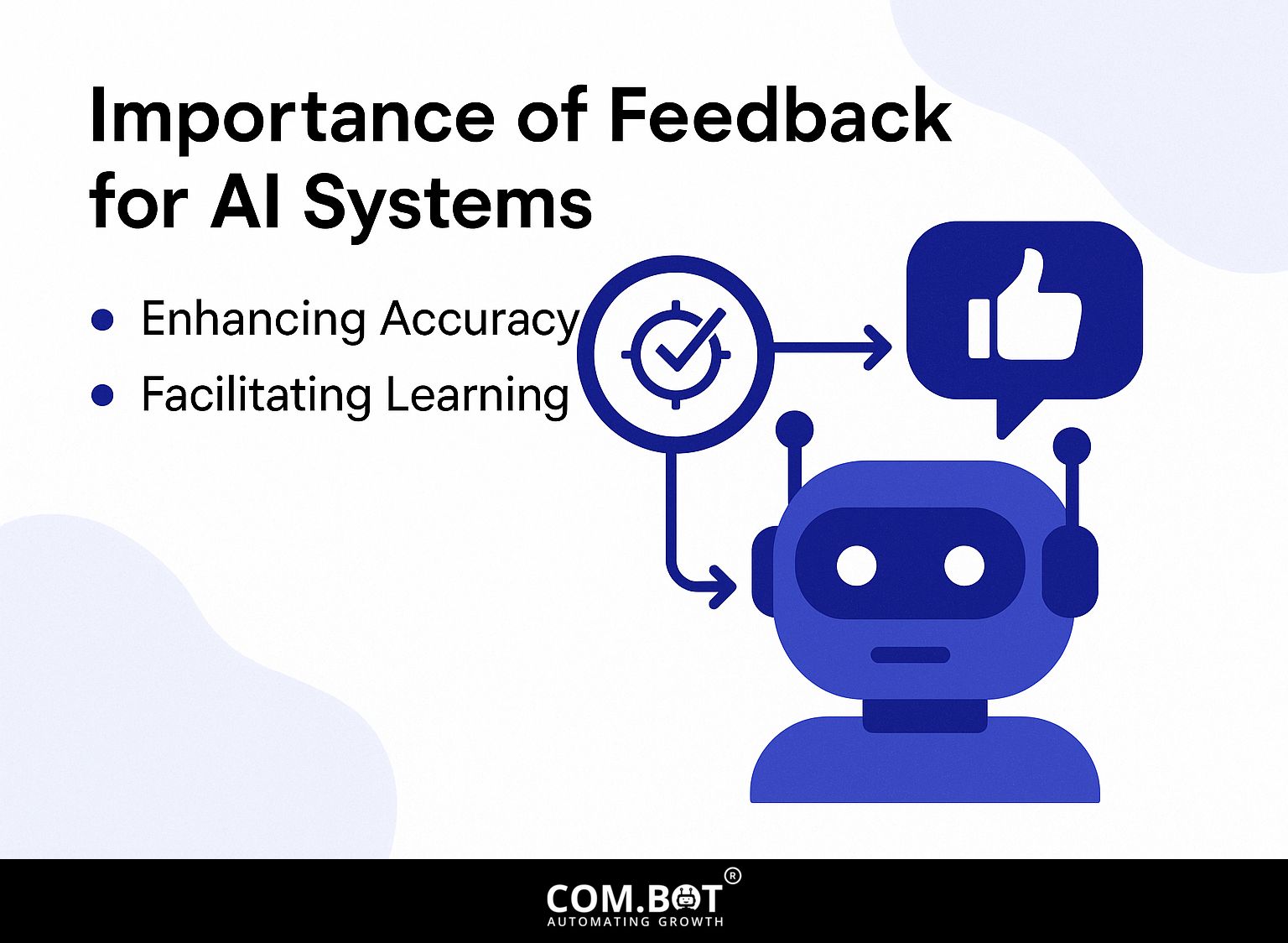
Feedback is important for AI systems because it makes them more accurate and helps them learn for better results. For an extensive analysis of this topic, our comprehensive study on feedback techniques for AI delves into various methods that enhance the learning process and accuracy.
Enhancing Accuracy
Including user feedback can improve model accuracy by up to 35%, which directly affects prediction quality.
To improve training data, it’s important to use repeated feedback processes. For example, collect feedback through surveys or user ratings after model predictions, then analyze the data for trends.
Tools like Qualtrics can facilitate this process. A case study with a retail prediction model showed that integrating user feedback led to an improved recommendation accuracy from 75% to 88%.
Monitoring metrics such as accuracy, recall, and user satisfaction provides essential data to improve models continually, using feedback from actual users.
Facilitating Learning
Feedback systems help AI learn over time, enabling them to change and grow with user demands.
Techniques like reinforcement learning with human feedback exemplify this process. OpenAI’s models use what users input to improve their performance by learning from their successes and errors.
A great example of success is how chatbots get better at talking with users by using real-time feedback to adjust their responses to fit each question better.
Businesses such as Google frequently revise their algorithms, using user behavior to improve search results.
These ongoing improvements make AI systems better and more responsive, meeting user expectations.
Techniques for Gathering Feedback
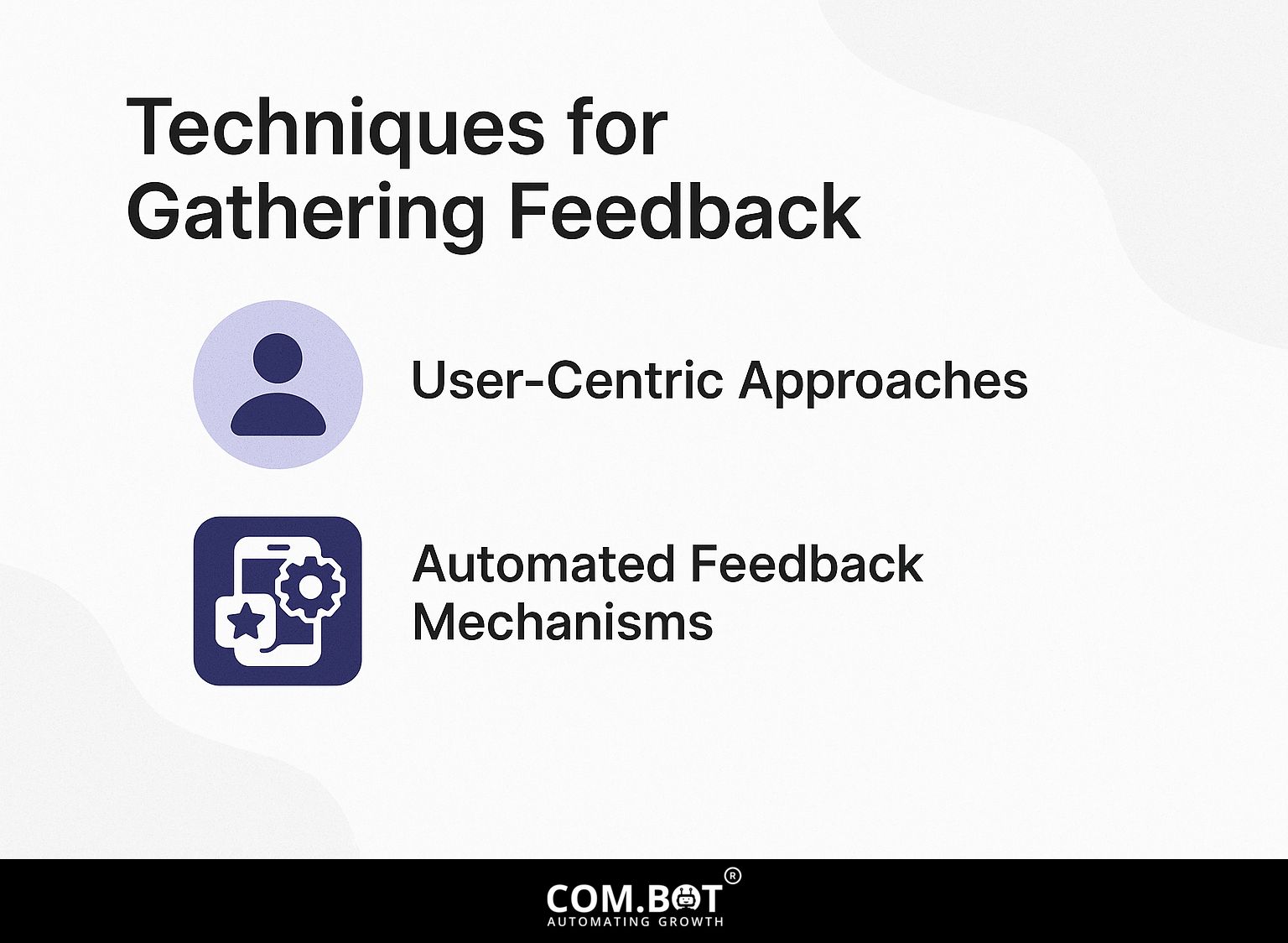
Receiving feedback is essential for improving AI models through both user-centric and machine-based methods.
User-Centric Approaches
Paying attention to users means collecting feedback through surveys and direct conversations, which provides important details for adjusting the model.
To effectively implement these strategies, consider using tools like Typeform or Google Forms for creating user-friendly surveys.
Begin by writing clear questions to collect useful feedback, like finding out which features users consider most important. After distributing the survey via email or social media, analyze the results to spot trends and areas for improvement.
Arrange regular check-ins to connect with users and build a community feeling. This can encourage honest feedback and, in turn, improve how your model works.
Automated Feedback Mechanisms
Automated feedback systems use information from users to direct AI systems without requiring any action from the users, by analyzing data and applying machine learning.
These systems employ techniques like behavioral analytics to track user interactions, capturing data such as click patterns and time spent on tasks.
Tools like Google Analytics and Hotjar can show how users interact, highlighting what they like and dislike.
Tools like Optimizely help teams test different parts of the user interface and track user interactions to find the best designs.
By using this information, AI models can improve and make experiences better, leading to higher user satisfaction without needing direct feedback.
Improvement Techniques for AI Systems
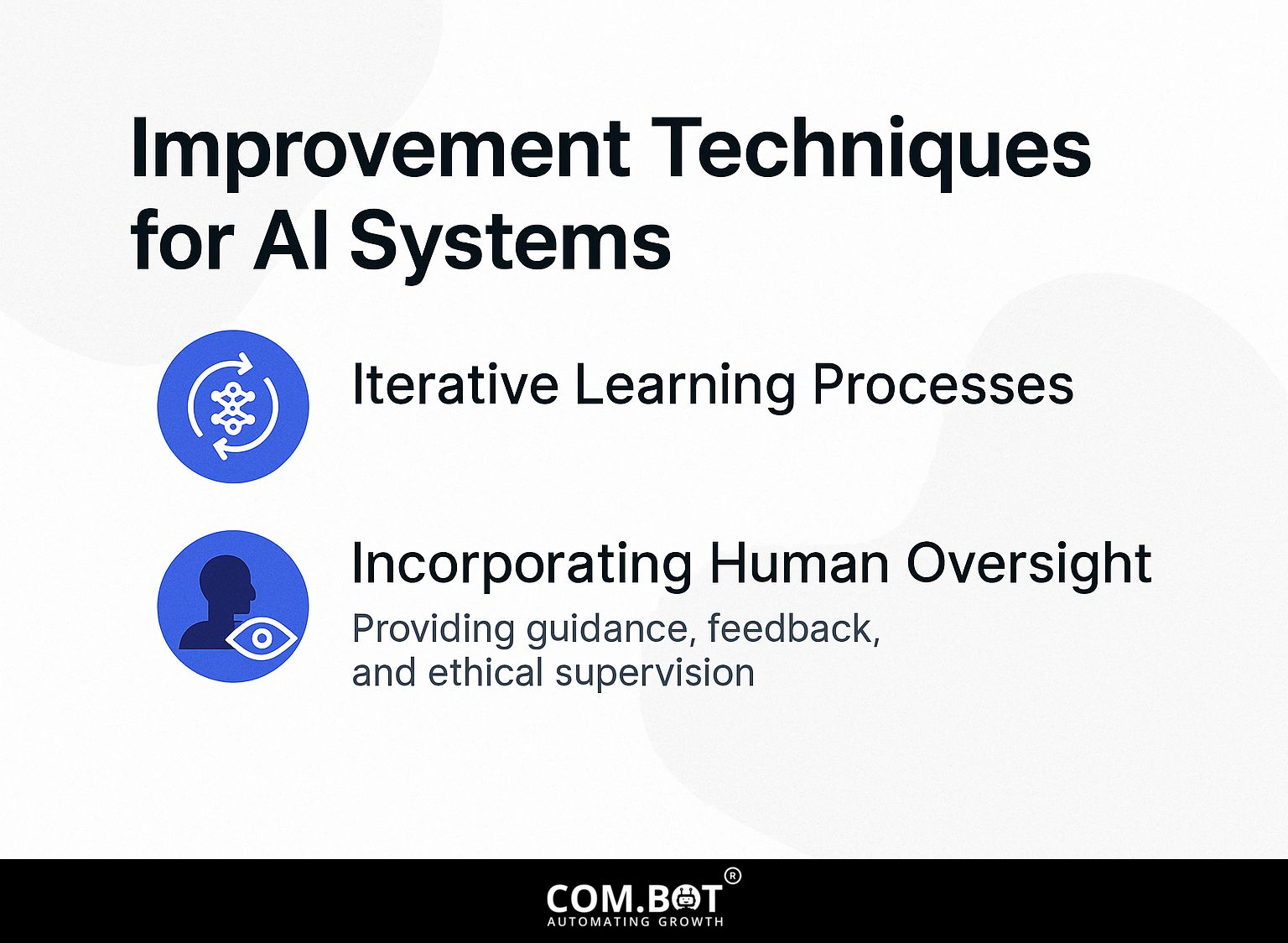
Using organized methods to improve AI systems is important for their development and adjustment based on collected feedback. For those interested in deeper insights, you might find our comprehensive overview on feedback improvement techniques for AI systems particularly enlightening.
Iterative Learning Processes
AI models get better as they repeatedly use feedback to learn and change quickly.
This method is clear in how Google improves its search algorithm, using how people interact with it as important feedback. For example, when people click on a link, it shows importance, causing the system to change how items are ranked.
Tools like TensorFlow offer platforms for creating machine learning models that use such feedback. Another example is reinforcement learning, used in applications like OpenAI’s game agents, which learn strategies through trial and error.
Creating a clear way to give feedback for any AI project helps the model get better over time.
Incorporating Human Oversight
By including human oversight in AI systems, we can reduce biases and make better decisions with informed feedback.
One effective method involves using Label Studio for data annotation, allowing analysts to review and correct AI-generated outputs.
A team can use Label Studio to arrange labeled images so that the AI learns from accurate data.
Routine audits of AI decisions help identify patterns of bias. It’s helpful to set up a system where human reviewers regularly check AI suggestions and give detailed feedback.
This approach allows ongoing improvement by including different human viewpoints in AI learning, aiming for a fairer system.
Challenges in Implementing Feedback
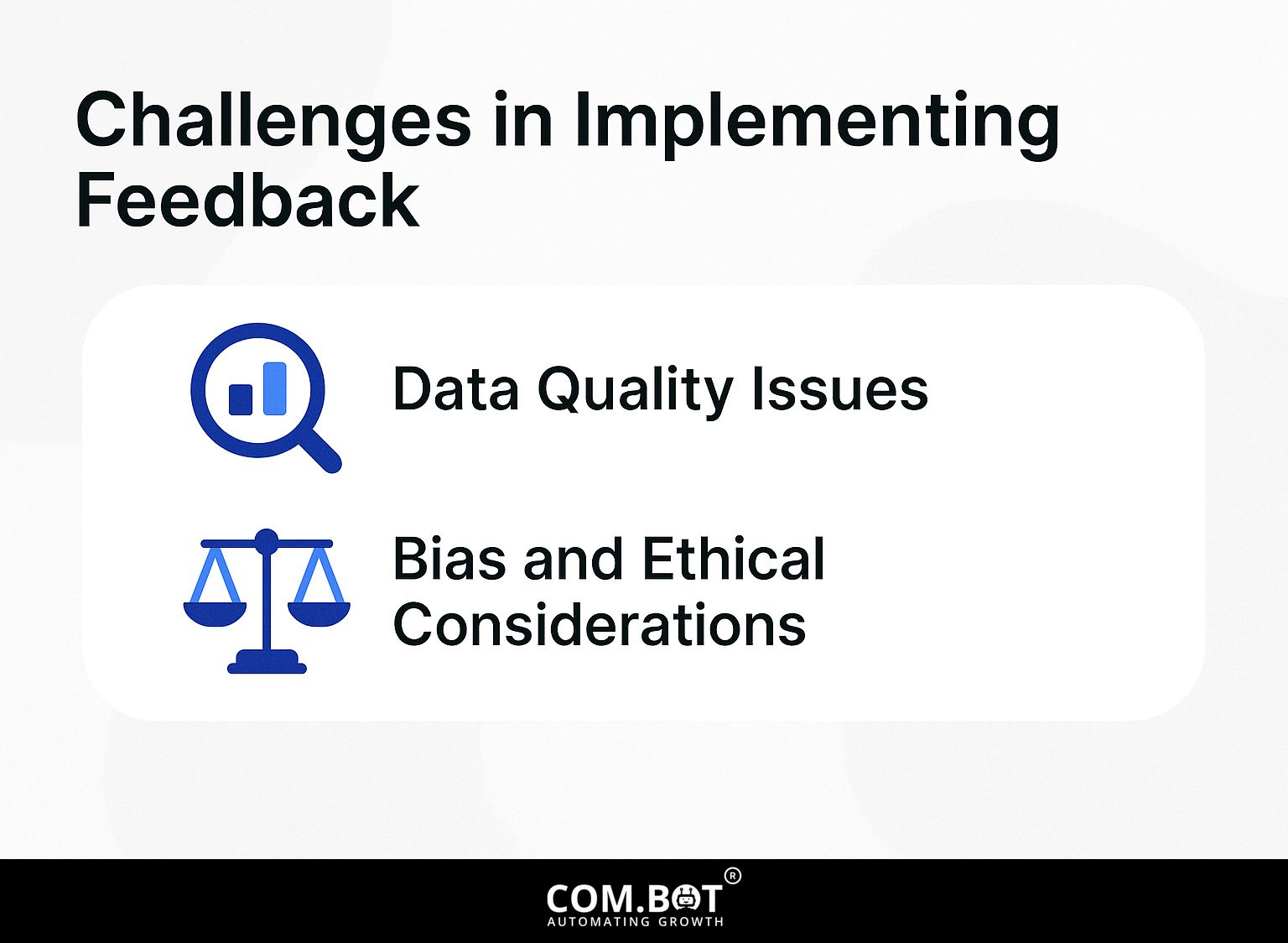
Even though it’s important, using feedback in AI systems has some problems that need fixing to keep them working well.
Data Quality Issues
Problems with data quality can greatly reduce how well feedback works, as using bad training data results in wrong model answers.
To address this, start by implementing regular data audits using tools like DataRobot or Talend. These platforms allow you to monitor the integrity of your datasets by identifying anomalies or missing values.
Next, establish a protocol for cleaning and preprocessing data, which includes removing duplicates and standardizing formats. Think about using tools that automatically check data to keep it consistent before starting the training process.
By following these innovative steps, you can significantly increase the reliability and quality of your training data, resulting in more accurate models.
Bias and Ethical Considerations
Bias in AI systems raises significant ethical concerns, necessitating careful implementation of feedback mechanisms to avoid reinforcing cognitive biases.
To deal with these problems, organizations can use various strategies.
- First, focus on gathering data from various sources to include people from different backgrounds and viewpoints.
- Tools like IBM’s AI Fairness 360 can help in checking and reducing bias in your algorithms.
- Regularly checking for bias is important; these checks find and fix unfairness in AI results.
- Implementing regular feedback loops involving a diverse group of stakeholders can facilitate continuous improvements, ensuring that AI systems evolve to meet ethical standards and serve all users equitably.
Upcoming Trends in AI Feedback Systems
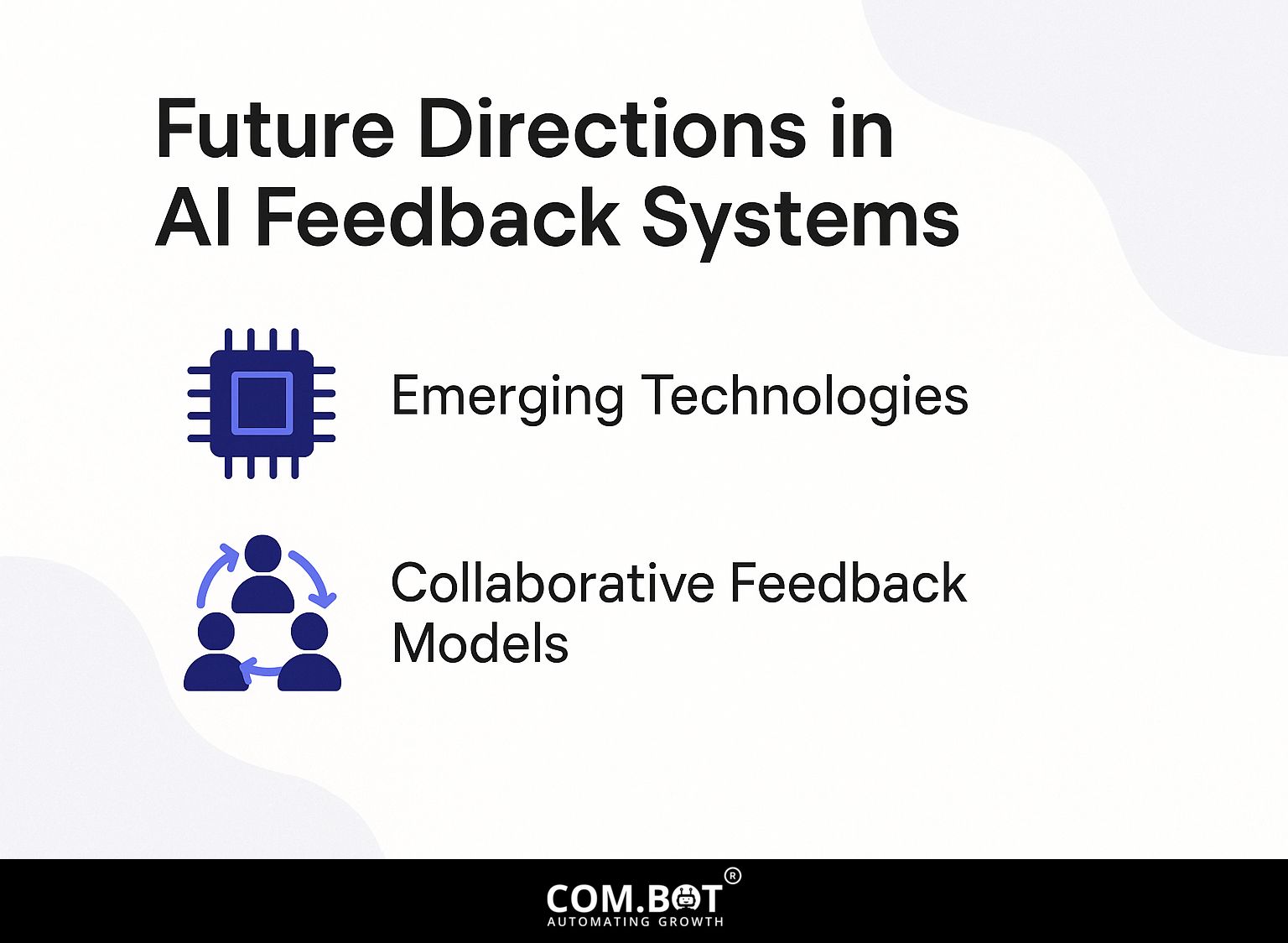
New technologies will soon change how AI feedback systems work, improving how users interact and work together.
Emerging Technologies
New technologies such as reinforcement learning with human feedback are changing the way AI systems learn and adjust.
This approach helps AI adjust its results according to what people like, resulting in outcomes that suit individual tastes better.
Businesses such as OpenAI use this approach to improve the accuracy of their models’ responses. Amazon’s recommendation system uses user activities to make better product recommendations.
By monitoring the products that users interact with the most, Amazon can regularly update its algorithms to provide a shopping experience that better fits individual preferences.
As these technologies advance, businesses can implement similar strategies to better align their AI systems with consumer needs.
Collaborative Feedback Models
Collaborative feedback models use user interactions to create a more detailed and responsive AI learning setting.
Platforms like GitHub help users give feedback by letting developers see and address issues and suggestions directly from users. This interaction improves AI projects by including practical applications and considerations.
Tools like UserVoice enable product teams to gather prioritized feedback and feature requests, creating a more aligned development process. Using feedback loops builds community trust and creates a product that grows with user needs, leading to ongoing betterment.
Frequently Asked Questions
What is the importance of feedback for AI systems?
Feedback is essential for AI systems as it allows them to continuously learn and improve their performance. It helps find ways to improve, fix mistakes, and make the system more accurate and effective.
How can feedback be collected for AI systems?
Feedback for AI systems can be collected through various methods including user surveys, user ratings, and user reviews. It can also be gathered from other AI systems through collaborative learning techniques.
Why is it necessary to include human feedback for AI systems?
Feedback from people is important for AI systems because it provides information and background that data alone can’t offer. It also helps to make sure that the AI system follows human values and ethics, making it more trustworthy and reliable.
What are some techniques for improving feedback for AI systems?
Some techniques for improving feedback for AI systems include using natural language processing to understand and analyze user feedback, implementing sentiment analysis to identify the overall sentiment of feedback, and incorporating feedback in the training data for the AI system to learn from.
Can feedback be used to improve the ethical implications of AI systems?
Yes, feedback can be used to improve the ethical implications of AI systems by identifying and addressing potential biases or harmful tendencies. It can also help make sure the AI system makes fair and ethical choices.
How can businesses benefit from gathering feedback for their AI systems?
Businesses can benefit from gathering feedback for their AI systems in various ways. It can help them improve the overall performance and accuracy of the AI system, leading to better customer satisfaction and retention. It can also give useful information for improving and creating new products.
